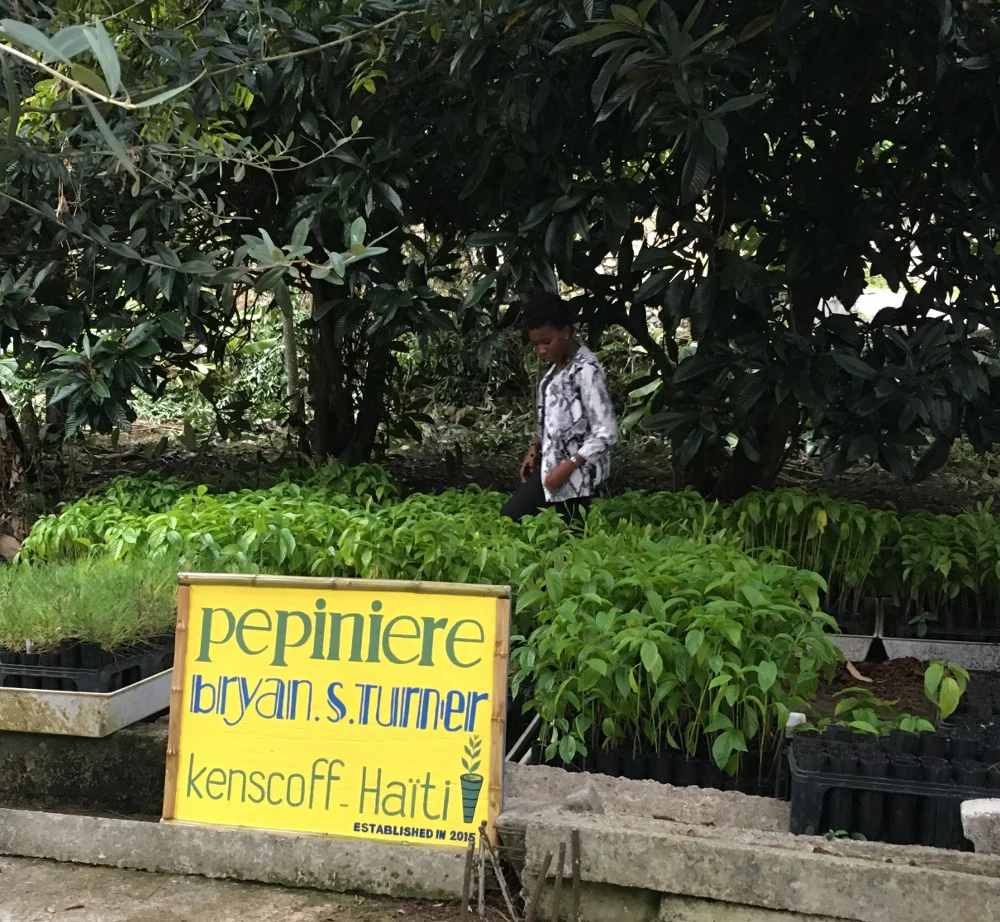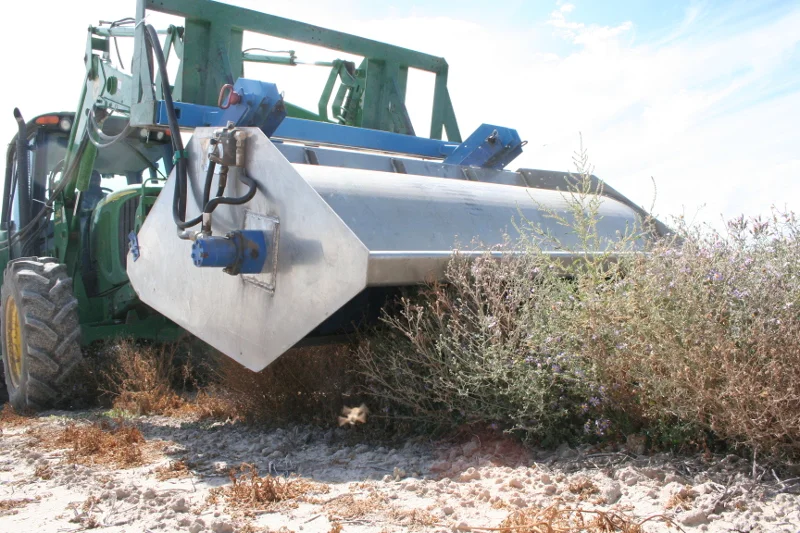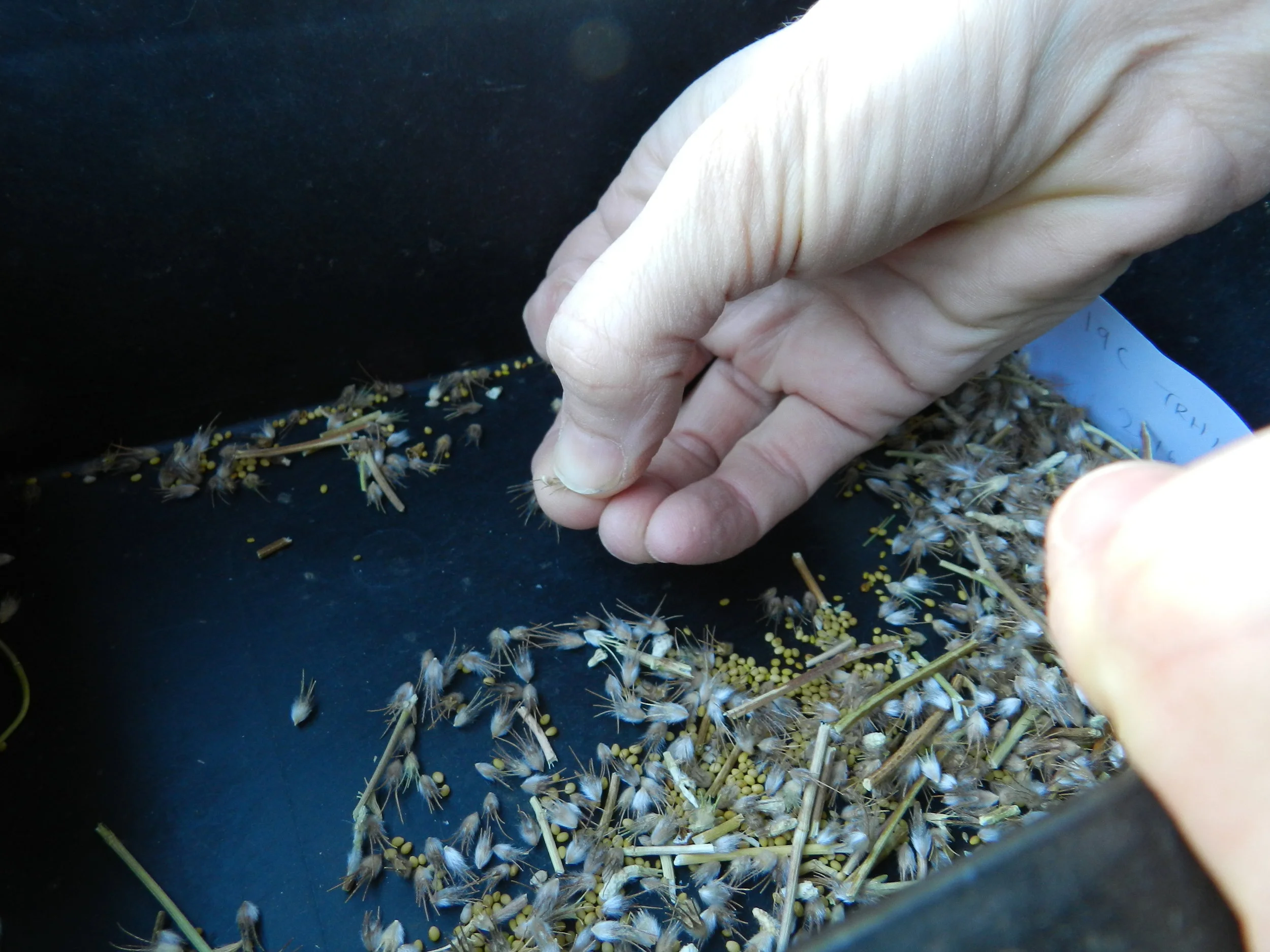Advances in plant ecology and evolutionary biology have clear applications to plant materials choices for ecosystem management that may have long-term impacts on ecosystem resilience. There is a need to balance the preservation of locally adapted genes with the desire to develop native plant materials that are genetically diverse and can respond to ecosystem changes.
Strategies to enhance biodiversity at SECIL. Outão Plant, a unique case study
SECIL-Outão plant is located within a Natural Park and a Natura 2000 site, south-west Portugal. The exploitation area covers about 99 ha, which includes two active quarries, one for limestone and one for marl. Both quarries and the cement plant are surrounded by natural areas, which cover about 425 ha.
The International Seed Society’s Second Seed Longevity Workshop
The USDA Agricultural Research Service’s National Laboratory for Genetic Resources Preservation hosted the International Society for Seed Science’s (ISSS) Second Seed Longevity Workshop at Colorado State University in Fort Collins, on July 20 – August 1, 2018. About 100 participants from 22 countries attended. ISSS aims to foster and promote research, education and communication in the scientific understanding of seeds. The workshop is held to discuss current findings and propose new directions for future research on seed longevity. Papers from the meeting will be available later in a Special Issue of Seed Science Research “Seeds, Conservation and Biodiversity”.
Roadside Revegetation – An Integrated Approach to Establishing native Plants and Pollinator Habitat and the Ecoregional Revegetation Application Tool
Roadsides can play an important role in the conservation of both native plants and declining wild and managed pollinator species. In an effort to enhance the success of roadside revegetation projects and create habitat that is favorable for pollinators, the US Department of Agriculture, Forest Service (USFS) and Federal Highway Administration (FHWA) partnered with the Xerces Society for Invertebrate Conservation and Chicago Botanic Garden to release a new DRAFT manual: Roadside Revegetation – An Integrated Approach to Establishing Native Plants and Pollinator Habitat.
Ed Toth Awarded the New York City Sloan Public Service Award
How to pellet seeds
This publication provides the first public domain and practical step-by-step guide on how to do seed pelleting, along with the list of materials and equipment needed. These instructions and materials will help scientists develop seed coating technologies capable of overcoming logistical and biological barriers to the more effective use and deployment of native seed across the world while enabling the native seed industry to improve seed-based restoration.
Formation of the European Native Seed Producers Association
A Dutch, a French and an Irishman walk into a German native seed farm.
That’s quite a good start for a joke based on national stereotypes. But when the Dutch, French and Irishman are followed by the Scottish, Spanish, Danish, German, Italian, English, Swedish, Czech, Polish, Swiss, Austrian and a Portuguese (on crutches) the joke might be getting a bit out of hand. And they’re not visiting just one farm. They’re on a mission to fit as many native seed companies as possible in a super tight five days schedule across most of Germany, and Switzerland.
The Sagebrush Seed Work Group
The sagebrush biome in western North America (Fig. 1) is experiencing degradation principally from increased frequency of disturbances and the displacement of sagebrush, primarily big sagebrush (Artemisia tridentata), and other native shrubs, forbs, and grasses by invasive species. This process has resulted in the loss of flora and fauna (e.g., greater sage-grouse, Centrocercus urophasianus) that depend on these ecosystems. Restoration of sagebrush ecosystems, either by seeding or planting nursery stock of sagebrush and other native plants, is our best defense to reduce the expansion of invasives and improve degraded lands.
Grassland Restoration in the White Carpathian Mountains
The White Carpathian Mountains in the southeast of the Czech Republic, Central Europe, host extremely species-rich grasslands. Unfortunately many of them were destroyed in the second half of the 20th century. Since 1990, however, a large area of arable land has been converted to grasslands, partly by applying a regionally produced seed mixture.
The White Carpathian grasslands situated in the Czech Republic, Central Europe, belong to the most species-rich grasslands worldwide (Wilson et al. 2012) and harbour many rare and endangered plant and animal species, especially vascular plants and insects (Jongepierová 2008; Jongepier & Jongepierová 2009). The current area of White Carpathian species-rich grassland sites amounts to 4,000 hectares (15.4 sq. mi).
Restaura Cerrado leads a community-based effort to restore grasslands and savannas in central Brazil
The Restaura Cerrado restoration project began in 2010, lead by Chico Mendes Institute for Biodiversity Conservation (ICMBio) on a 300 ha tract of the Chapada dos Veadeiros National Park. The project aim was to develop efficient techniques for restoring grasslands and savannas on abandoned grazing lands. Historically, these areas underwent almost complete loss of native vegetation and were replanted with exotic forage grasses, which still dominate most sites. These areas are largely neglected in Brazil’s restoration efforts. Of the few plant recovery efforts that took place, most were actually afforestation plantings, in which seedlings of forest tree species are planted in habitats where they would not occur naturally instead of reestablishing native plant communities. To change this approach and foster the return of the native plant communities, Restaura Cerrado set out to test a variety of methods for direct seeding native grasses, shrubs, and forbs – the propagation of which was previously unknown. Beginning with a single investment to serve as start-up capital, the group was able to leverage additional funds and catalyze research partnership between ICMBio, University of Brasília, Rede de Sementes do Cerrado (Cerrado Seeds Network) and Embrapa (Brazilian Agriculture and Animal Husbandry Research Enterprise).
Improving seedling production and access to environmental knowledge in Haiti
Haiti, often featured in news around the world for ongoing humanitarian crises, boasts a rich natural history that is both intertwined with, and threatened by, those crises. This mountainous country has suffered from continuous landscape degradation for over 200 years. Long-term exploitation of natural resources, whether for export or to support charcoal production for household energy needs has resulted in widespread deforestation. Lack of government infrastructure coupled with uncoordinated efforts by NGOs has led to this becoming a persistent condition. The loss of forests has led to severe soil erosion on Haiti’s mountain slopes, reducing agricultural productivity and creating massive flooding and landslides. Despite the magnitude of challenges, many Haitians are organizing to improve landscape conditions through grassroots rehabilitation and restoration efforts. Hope for a better future builds as community-based projects work toward reforesting Haiti’s slopes and building more sustainable ecosystems and communities.
Collecting Light, Wind-dispersed Seed with a Modified Flail-Vac
Indeterminately maturing, wind-dispersed wildflower seeds can be difficult to effectively harvest to maximum yields using traditional equipment. We modified a Flail-Vac Seed Stripper by mounting heavy loops of chain to the front to provide agitation of the floral canopy to disarticulate seed from the flowers of Machaeranthera canescens. This allowed for multiple, non-damaging harvests that collected primarily ripe seed that was ready to shatter. We saw a 5 fold increase in seed yields compared to those obtained with a standard Flail-Vac and a significant reduction in seed processing time compared to our previous harvest experience.
Breakthrough seed meeting on Drylands of the world
The first symposium dedicated to native seeds in dryland restoration organised by INSR and the Kuwait Institute for Scientific Research (KISR) was held in November in Kuwait City. With almost 200 delegates from some of the most impressive dryland regions of the world from the Sudan to the Sahara to the Australian deserts, the three day meeting and field trip was an inspiring event as scientists and practitioners shared the latest research and technologies for saving and restoring the world’s drylands.
The Pop Test: A Quick Methods to Estimate Seed Quality
The Aberdeen Plant Materials Center uses a “pop test” to get an approximation of seed viability during the seed cleaning process by sprinkling a small number of seeds on a hot plate and counting the number that pop. If the percentage of popped seed is high enough, usually above 90%, we know the cleaning system is doing a good job of removing empty or shriveled seed. If the popped percentage is low, we can adjust the air-flow and remove more light seed.
Seed Conservation of Rare Plants in Colorado
Picture Colorado. What comes to mind? For most people, it’s the soaring, majestic peaks of the Rocky Mountains. However, the alpine ecosystem constitutes just one of Colorado’s six major vegetation zones. The state’s rich floral diversity is distributed throughout multiple systems, including shortgrass steppe, shrub steppe, pinon-juniper woodland, montane forest, subalpine forest, and alpine. Of Colorado’s 2,797 native plant species, 525 (16%) are rare, and 90 (2.6%) are rare endemics (see all rare Colorado species here). All of these taxa are at risk of decline as a result of multiple, interacting factors.
The First Characterization of the Seed Industry for Herbaceous Native Species in Europe
In Europe, grasslands are counted among the most species-rich vegetation types but also the most extensively degraded and least protected habitats. The role played by the native seed production sector is therefore crucial in providing native seed for grassland restoration
The native seed industry for herbaceous plants in Europe is a relatively young sector, with the oldest companies having about 35 years of experience. This sector has also a very uneven level of development across the continent.
The NASSTEC Conference – The First Europe-based International Conference on Native Seeds
On September 2017, the final conference of the NASSTEC (Native Seed Science, Technology and Conservation) Initial Training Network, was held at the Royal Botanic Gardens Kew (UK). NASSTEC main objectives were to train a new generation of native seed specialists in Europe and to better connect European native seed stakeholders in order to improve the native seed supply and the success in grassland restoration.
The College First Program Opens Doors to New Possibilities in Plant Conservation and Ecological Restoration
The program is based at the Chicago Botanic Garden, where students work alongside researchers and college-age mentors (who are part of Garden’s National Science Foundation’s funded Research Experience for Undergraduates program). Working with their mentors, students help to address important challenges in plant conservation and restoration. The goal of the program is to increase diversity in STEM fields, with an emphasis on a university education as a means of creating and achieving career aspirations for students, many whom are often the first in their families to attend college. The students are responsible for developing and carrying out an independent project to get hands-on experience conducting plant-based research. Experiences like these are unique and spark a deeper understanding and appreciation of the natural world, a sentiment which can sometimes seem distant in a large metropolitan area like Chicago.
Botanic Gardens and Native Seed Production
Botanic gardens play a leading role in the conservation of rare and threatened plant species around the world. Increasingly they are active in ecological restoration. Scaling up the use of seed banking facilities and the horticultural skills of botanic gardens should help to address the global shortage of native seed for ecological restoration
Collecting Native Seed in Subarctic Ontario, Canada
Mining companies have few choices. They can purchase seed from a limited number of species that are sourced from far away (>1000 km west or south). They can collect seed themselves from local wild populations. Or, they can encourage people from local communities to collect and sell native seed. Collecting seeds locally, or within seed zones and from a comparable habitat (i.e., moisture regime, soil type) poses the lowest ecological risk and leads to better survival of plantings over the long term. Mine restoration planners are unlikely to possess the local knowledge needed to find and collect desired seed. In contrast, local people may be familiar with plant abundances and their regional phenology, although they may require some training on sustainable collection practices and seed cleaning procedures. For both ecological and economic reasons, local seed collection by nearby communities should be encouraged for the restoration of current and future developments in the region.
Our research focused on the developing simple protocols that use accessible and inexpensive equipment for seed collection and processing. We have published our general protocols online along with species-specific protocols for collecting, cleaning, storing and propagating 60 species which may be useful for the rehabilitation of mined lands.




















